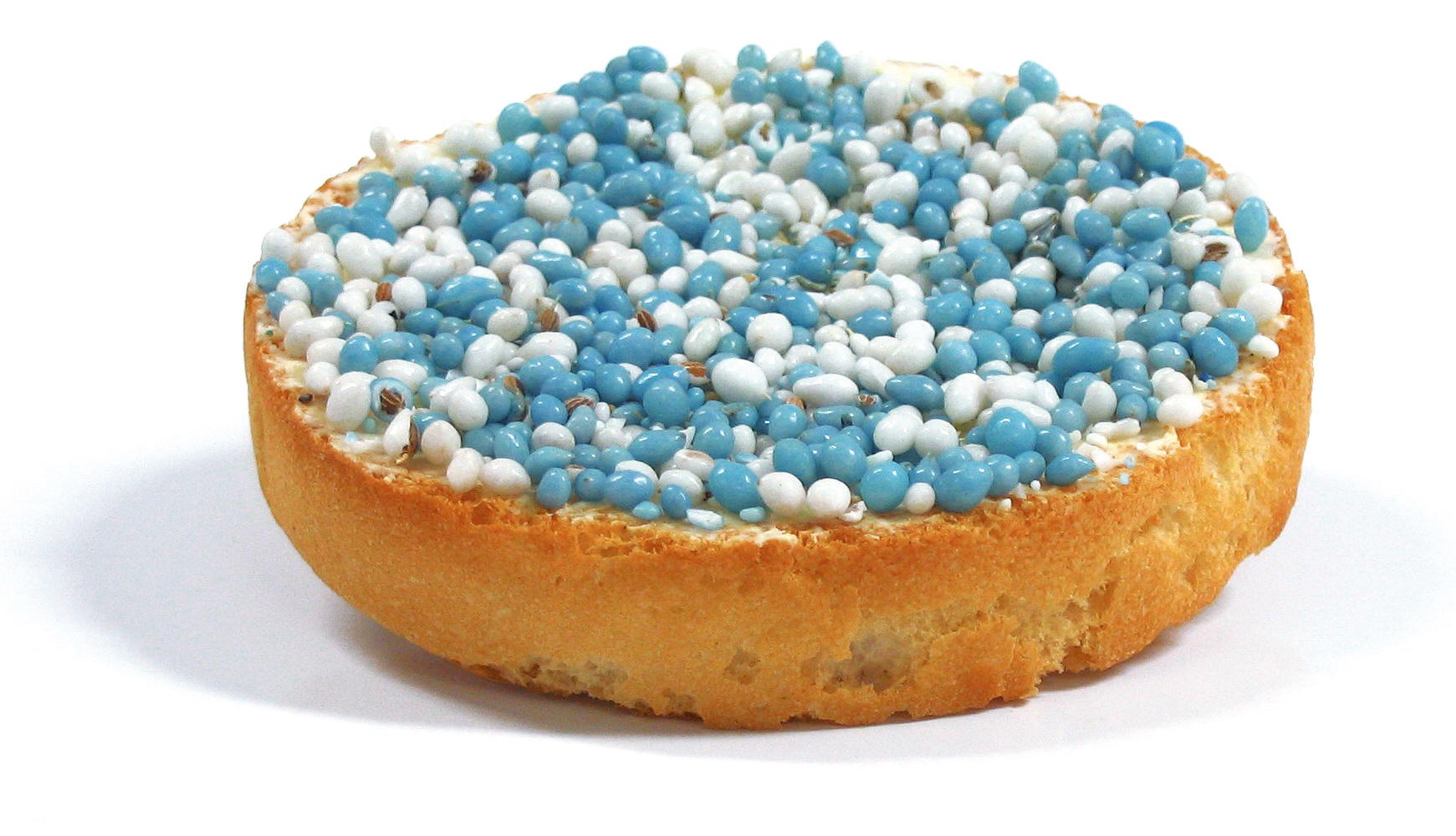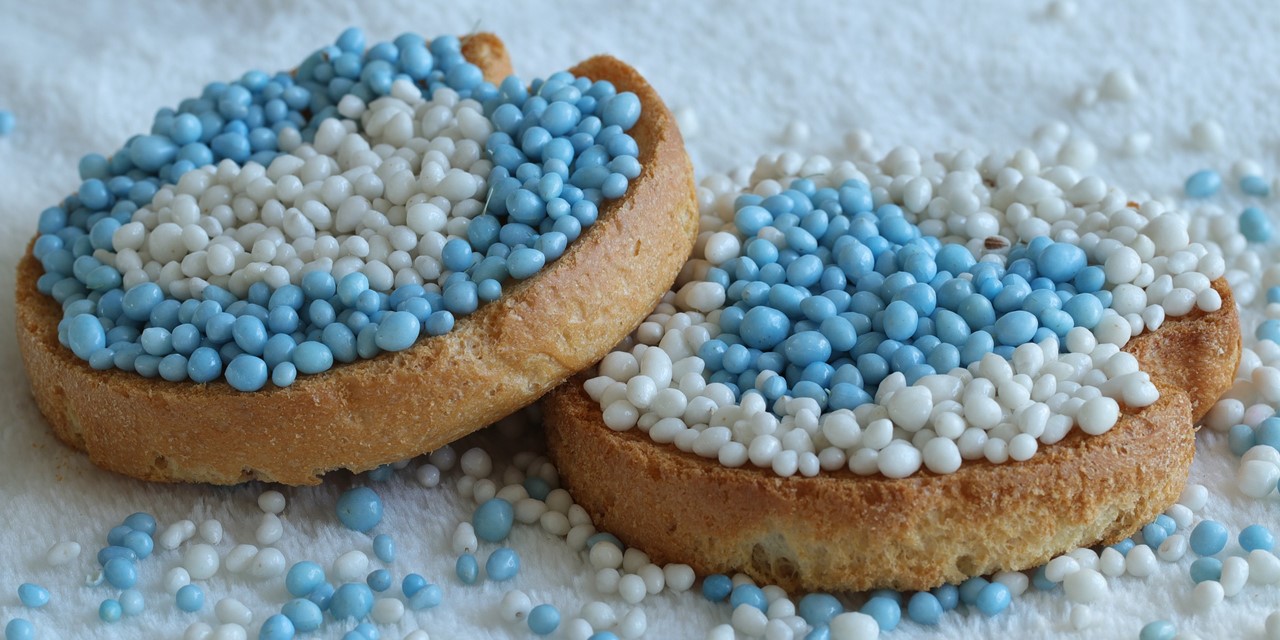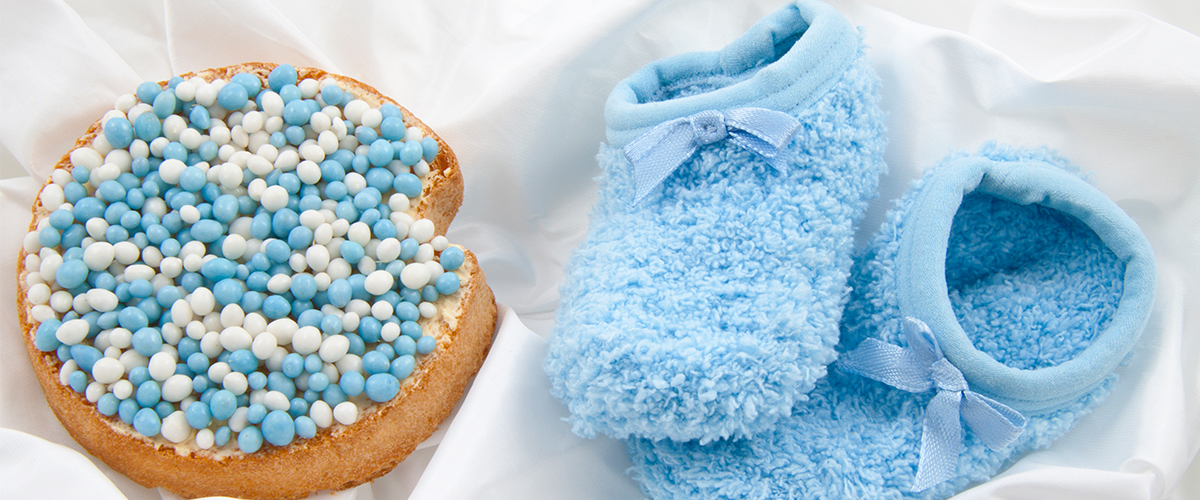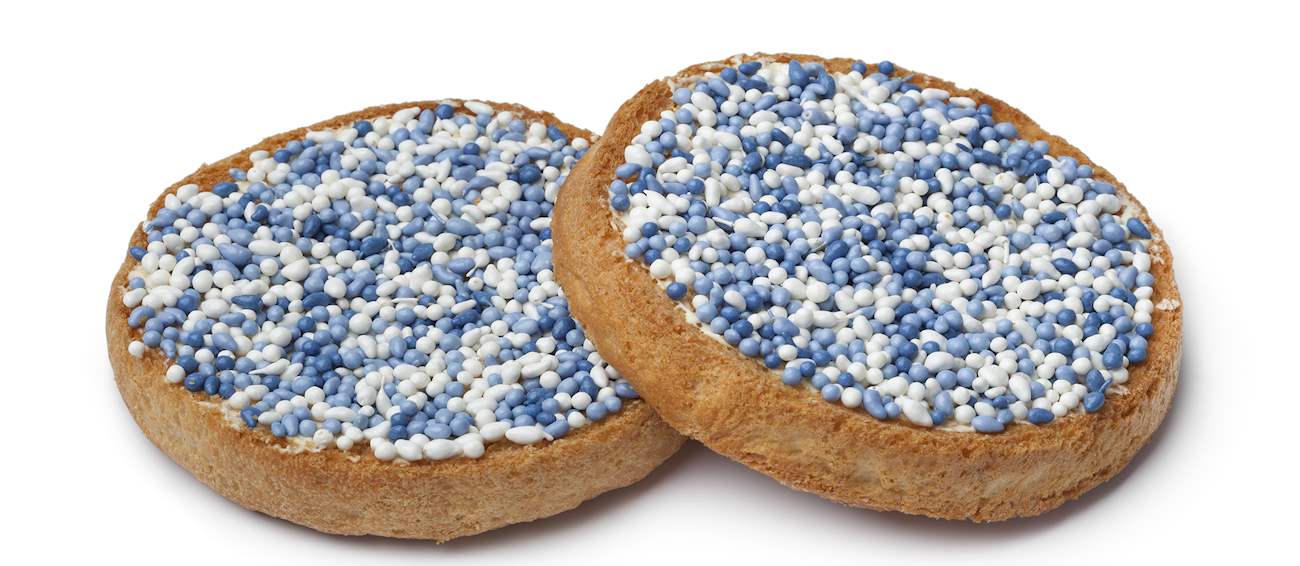
Beschuit Met Blauwe Anijszaadballen, Muisjes, Traditie in Nederland Om De Geboorte Van Een Zoon
Dit was een slimme publiciteitsstunt. Sinds die tijd geeft iedereen beschuit met muisjes tijdens het kraambezoek. Meestal wel met boter eronder zodat het goed blijft liggen. Er werden trouwens tot 1994 altijd roze muisjes gegeten voor meisjes en witte voor jongens en toen kwamen pas de blauwe. Dit is waarom we beschuit met muisjes eten - RTL Z.

Beschuit Met Blauwe Muizen Een Nederlandse Traditie Door Een Geboorte Stock Afbeelding
Preheat the oven to 350F/175C. Spray each ramekin with cooking spray. Place the dough balls on a baking sheet, cover each one with a ramekin and let the dough rise for about 30 minutes. Place the sheet on the middle rack and bake for twenty minutes, leaving the ramekins in place. Retrieve the baking sheet, remove the ramekins, turn the beschuit.
(BEFF090A9E4ADAD3E39D831F95760C70).jpg)
De cultuur van beschuit met muisjes Immaterieel Erfgoed
The sugar-coated seeds are always served atop a piece of twice-baked bread called a beschuit, which is known internationally as a Dutch rusk or crispbake. The tradition of sharing treats after a.

Beschuit met blauwe muisjes Inside Office
Afbeelding beschuit met blauwe muisjes, or image of a biscuit with blue sprinkle toppings, is a traditional Dutch delicacy that has gained popularity around the world. This delicacy is often served during baby showers to celebrate the arrival of a baby boy. The blue sprinkles are referred to as "muisjes," which literally means "little mice,"… Đọc tiếp »Afbeelding Beschuit Met.

Roze Blauwe Muisjes Beschuit met muisjes, Kraamcadeau, Muisjes
Beschuit met muisjes literally means biscuits with little mice. No worries! It's not actually made of real mice. (Thankfully). Beschuit met muisjes are round and made of bread, butter and aniseed. Beschuit means biscuit, but it's not a biscuit in the American sense of the word for biscuit. It's more like a thick, crusty cake/bread.

Alles over het klaarmaken van beschuit met muisjes
Muisjes. De naam muisjes vindt zijn oorsprong in de vorm van het anijszaadje dat met zijn ovaalvormig lichaam en het lange staartje veel lijkt op een muis en de muis vroeger als het symbool van de vruchtbaarheid werd beschouwd. Muisjes werden en worden in Nederland vooral na de geboorte van een kind gegeten, het bekende beschuit met muisjes.In andere landen is dit gebruik volkomen onbekend.

Beschuit met blauwe muisjes IlluStraver
5 variaties op beschuit met muisjes. 1. Roze koeken met muisjes. Smeer een dun laagje witte chocolade pasta over de roze koeken en versier ze met roze of blauwe muisjes. 2. Zoenen met muisjes. Smeer voorzichtig een dun laagje witte chocoladepasta over de bovenkant van de zoenen en versier ze met roze of blauwe muisjes. 3. Oreo koekjes met muisjes.

De Beschuit Met Blauwe Anijszaadballen, Muisjes, Het Nederlands Behandelt Voor Wanneer Een
Dutch custom. In the Netherlands it is customary to serve beschuit met muisjes when a baby is born. Initially pink muisjes on rusk were served when the baby was a girl, and white muisjes for a boy. Later they would mix the white and pink muisjes. Until 1990 you could only buy the white/pink variety, but in this year De Ruijter, manufacturer of.

Nederlandse Traditie Beschuit met Muisjes
Beschuit met muisjes. Van origine bevat beschuit eieren en is het dus niet plantaardig. Er is echter ook beschuit zonder ei te vinden, zoals de "Vezelrijk boeren beschuit meerzaden" en "Vezelrijk boeren beschuit volkoren" van Bolletje. Je kunt ze met van alles beleggen en ze zijn vooral lekker als licht ontbijtje. Voorbereidingstijd: 10 minuten.

Ieder mensje is uniek Beschuit met blauwe muisjes en één w… Flickr
Dan betaal je tussen de € 0,46 cent per pak naturel beschuit tot € 1,34 per pak granen of donker volkoren beschuit. Voor een pak van 230 gram gestampte muisjes betaal je € 1,15 en voor een pak van 280 gram gewone muisjes betaal je € 1,65. Ga je naar de Aldi, dan vind je een pak beschuit al voor € 0,35 en een pak van 280 gram muisjes.

Beschuit met muisjes Wandel
The muisjes became so popular that everyone wanted to use them for the births of their children. These days the tradition is still very strong, indeed. When older children get a new baby brother or sister, it is customary to bring the new baby for 'show-and-tell' and to hand out beschuit met muisjes to their class in celebration.

Beschuit Met Blauwe Muizen Een Nederlandse Traditie Door Een Geboorte Stock Foto Image of
Witte, blauwe en roze Muisjes. Roze voor een meisje en blauwe voor een jongen… heel logisch, maar dit is niet altijd zo geweest. Bij de geboorte van een meisje werd sinds 1860 roze Muisjes geserveerd, maar bij een jongen kreeg je witte Muisjes voorgeschoteld. Pas in 1994 werden de blauwe Muisjes geïntroduceerd. Het beschuit

Beschuit met blauwe muisjes voor deze bekende oudvoetballer!
Beschuit met muisjes is a traditional Dutch snack that is consumed when celebrating the arrival of a baby. It consists of beschuit - a round, toasted, dry, and crunchy rusk that is smeared with either margarine or butter, then topped with muisjes - sugar-coated aniseeds.. The topping can either be pink and white if the baby is a girl (these are the traditional colors), or blue and white if.

Beschuit met muisjes. When someone has had a baby they treat family and friends whit biscuit
Muisjes started being produced in the Netherlands in the 18th century, and replaced sugar as the favourite topping used on beschuit to symbolise successful childbirth. However, beschuit was quite expensive at the time and mostly reserved for festivities organised by the wealthy, so most people instead ate sugary white bread until beschuit became cheaper.

Beschuit Met Muisjes Traditional Snack From Netherlands
Weissing, FJ, Pen, I & Broek van den, JM 2000, Beschuit met blauwe of roze muisjes? in JP Bakker, JM Tinbergen, T Piersma & JM van den Broek (eds), De onvrije natuur. KNNV, Utrecht, pp. 131 - 133.

Beschuit met blauwe muisjes thee geboorte thee TwisTea
Beschuit met muisjes is a traditional Dutch treat that holds great significance in the country's culture and heritage. Often served to celebrate the birth of a newborn baby, this delicacy is beloved both young and old alike. In this detailed and informative guide, we will explore the origins, ingredients, preparation, and cultural.